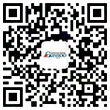China sends fuel-cell vehicles around the globe
SHANGHAI, China — With Honda just introducing the first few trial leases of its hydrogen-powered FCX Clarity in Japan and the U.S., and major international automakers such as General Motors still years away from launching production-ready fuel-cell cars, a small Chinese company already has begun exporting the first low-cost hydrogen fuel-cell vehicles. The catch: They're two-wheelers.
Since May, Shanghai Pearl Hydrogen Power Resource Technology has shipped 30 fuel-cell mopeds overseas, according to Shi Tao, its marketing director. This includes 20 units to Spain through a local partner, and the rest to the United States and Britain.
Shanghai Pearl, which was founded in 2006, is the first Chinese company to export fuel-cell bikes that will compete with similar models from German company Masterflex and Britain's Intelligent Energy.
Fuel-cell electric bikes have a hydrogen container under the seat that is used to generate electricity to power the bike. Most of the e-bikes currently on the market are powered by lead-acid batteries.
Compared with traditional mopeds, the Chinese-made hydrogen-powered e-bikes offer longer riding distances and easier recharging. The fuel-cell moped can travel up to 50 miles with 1.8 ounces of hydrogen after a 20-minute charge that costs 29 cents. A typical lead-acid e-bike usually runs out of power after 10 miles and takes four to six hours to fully charge the battery.
The hybrid fuel-cell e-bike gives users multiple recharging options, enabling them to charge at their destination or along their route.
The emerging market has also attracted another competitor. Shanghai Shen-Li High-Tech is one of the first Chinese companies to develop and manufacture hydrogen fuel cells for transportation products.
Currently, almost all the fuel-cell vehicles in China are powered by Shanghai Shen-Li's fuel cells. It provided 11 fuel-cell passenger-car engines and several fuel-cell bus engines for the Beijing Olympics.
Pearl's fuel-cell mopeds rely heavily on hydrogen refilling stations, the lack of which is a major hurdle in the Chinese market. Overseas markets with hydrogen stations will be the company's top priority. Pearl aims to make further inroads in Germany, France, Italy, California and Canada.
A cheaper price is also making the Chinese-made fuel-cell mopeds more competitive.
Pearl sold its mopeds at $2,900 in Spain, higher than the typical e-bike price of $1,300-$2,200, but a third to a quarter cheaper than models developed by foreign rivals.
"We are capable of further reducing the price to [$2,200 to] make it even as cheap as a normal e-bike. That will serve the market better," Shi said. The company aims to boost annual production to 1,000 units by 2011, up from about 100 units this year.
It is estimated that moped sales in China will reach 30 million units by 2010, including exports of some 5 to 6 million units.
Here is a relatively inexpensive way to ease into the hydrogen economy.
Gasgoo not only offers timely news and profound insight about China auto industry, but also help with business connection and expansion for suppliers and purchasers via multiple channels and methods. Buyer service:buyer-support@gasgoo.comSeller Service:seller-support@gasgoo.com







